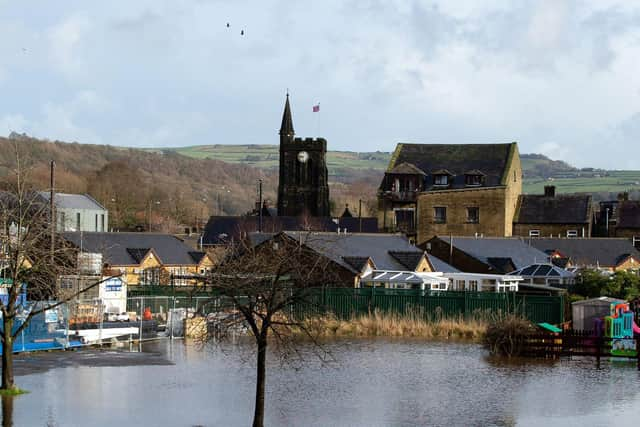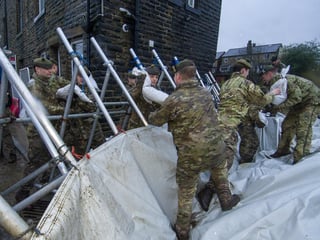Dramatic footage shows how fast water rose during Storms Ciara and Dennis
and live on Freeview channel 276
New videos from a National Trust flooding project show just how quickly water rose during storms Ciara and Dennis last month.
The footage, taken from fixed cameras at various points on the moors in the Calder and Colne Valleys is helping experts study how water can be stored in the uplands and reduce flood risk in the valleys below.


Advertisement
Hide AdAdvertisement
Hide AdWorking in partnership with Yorkshire Water, this multi-million-pound project uses natural flood defences high in the catchment to try to slow the flow of water during heavy rainfall.
During storm Ciara, 100mm of rain fell in 12 hours. In Mytholmroyd, 500 homes and 400 businesses flooded after the downpour. The Calder Valley has steep sides, with streams and rivers fed by the surrounding uplands.
This project aims to reduce how quickly water makes it down the valley sides to people’s homes.
Eventually, it’s hoped that these kind of flood defences can be put in place on a bigger scale across West Yorkshire’s uplands.
Advertisement
Hide AdAdvertisement
Hide AdThe videos show how leaky dams made of peat, stone and willow encourage the water to pool on the moors. Instead of storm water running quickly from the uplands, these leaky dams temporarily store rainfall.
This helps the water to soak into the soils. As well as slowing the flow into streams, these natural dams also encourage peat to form on the moors, an important tool in the fight against climate change.
Project Manager, Rosie Holdsworth said: “It’s really upsetting to see homes and businesses ruined again by flooding.
"These videos help us understand how we can use natural flood management to help reduce the flood risk in Calderdale and Kirklees.
Advertisement
Hide AdAdvertisement
Hide Ad"Although leaky dams will never be able to stop flooding completely, it’s hoped that by turning the uplands back into a sponge, we can help to slow down the flow of water and stop rivers rising so quickly.”
The work forms part of a project across the Calder and Colne Valleys aiming to reduce flood risk using natural methods, funded by the West Yorkshire Combined Authority and the environment agency.
So far, 102,000 trees have been planted at Gorpley reservoir, above Todmorden to stabilise soils and reduce flood risk.
At Hardcastle Crags in West Yorkshire, volunteers have installed over 500 leaky dams to slow the flow of water.
Advertisement
Hide AdAdvertisement
Hide AdCraig Best, Countryside and Partnership Manager for the National Trust in West Yorkshire, said: “This is one of the largest Natural Flood Management projects in the UK, but we want to do even more to reduce flood risk.
"We’re developing plans to roll-out natural flood management and woodland creation on a mega scale in the uplands. We want to keep working with Yorkshire Water as part of our Common Cause partnership and with other partners such as the Woodland Trust. This will form part of the Northern Forest and White Rose Forest.”
